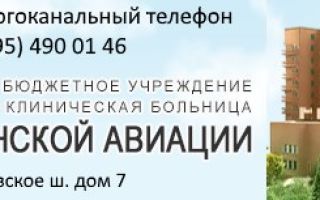Multidisciplinary clinic. A well-equipped endoscopy department allows you to effectively diagnose and treat intestinal diseases.
There is a paid branch.
more about what endoscopy is here .
Detailed information can be found on the website http://ckbga.aero
Endoscopy department
Profile : diagnosis and treatment of diseases of the gastrointestinal tract.
The head of the department is an endoscopist of the highest category Oleg Viktorovich Dobrovolsky.
Leading specialists:
Guskova Inna Igorevna, endoscopist of the highest category;
Smilkovich Valentina Nikolaevna, endoscopist of the highest category;
Agafonov Sergey Sergeevich, endoscopist.
Doctors from other medical institutions collaborate with the department and provide consultations:
Doctor of Medical Sciences Nasedkin Gennady Konradovich, Candidate of Medical Sciences Belyaev Mikhail Vladimirovich.
Diagnostic methods
- The department is equipped with endoscopic video systems made in Japan, with high-definition visualization and magnification. Video endoscopes have the highest resolution, which is necessary for correct and accurate diagnosis of the disease, especially in the initial stage.
- To detail the structure of the mucosa during endoscopic studies, we actively use the staining method using vital dyes. The use of dyes is especially effective in combination with the capabilities of video systems. Staining the mucous membranes during the study allows not only to clearly determine the boundaries of the lesion, but also to identify early forms of tumors and pretumor changes. The method is based on the property of various dyes to interact differently with normal and pathologically altered epithelium, as well as to stain different types of epithelium differently.
- For the same purpose, the newest method is used, which is not yet widespread in our country - FICI - spectral color isolation technology. So-called “narrow-spectrum endoscopy” allows, without the use of dyes, at the touch of a button, to select wavelengths captured by a sensitive video system and highlight details that are not visible under white light. “Narrow-spectrum endoscopy” – endoscopy of the 21st century.
- The method of topographic wall pH-metry makes it possible to identify acid-dependent gastrointestinal diseases, select individual therapy, and identify pre-existing disease conditions. Identification of pathogenic microflora in the stomach - Helicobacter Pilori, widely used in the department, not only helps to determine one of the causes of the disease, prescribe the correct treatment and speed up recovery, but also contributes to the prevention of gastric cancer.
Treatment methods
The department performs endoscopic removal of polyps of the colon and upper digestive tract using high-frequency currents. Numerous studies have proven the high efficiency and low invasiveness of this method with a small number of complications.
Electrosurgical sanitation of the colon and stomach using endoscopes is currently one of the methods for preventing the development of cancer of these organs.
Considerable clinical experience has been accumulated in endoscopic polypectomies. There are few contraindications to polyp removal and they are mostly relative.
Safety
Particular importance is attached to the processing of endoscopes and instruments for them. Endoscopes are disinfected in “Adaptoscop” devices from Johnson & Johnson, the processing of which is today recognized as the highest standard of the European Union. Instruments are sterilized centrally in the sterilization department.
Contact phone numbers:
Head of department 490-03-90;
Office staff 490-04-36.



